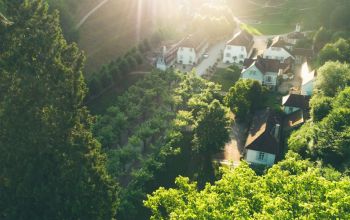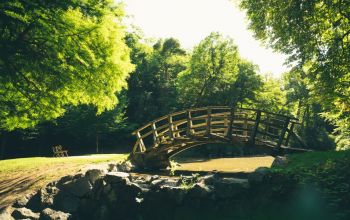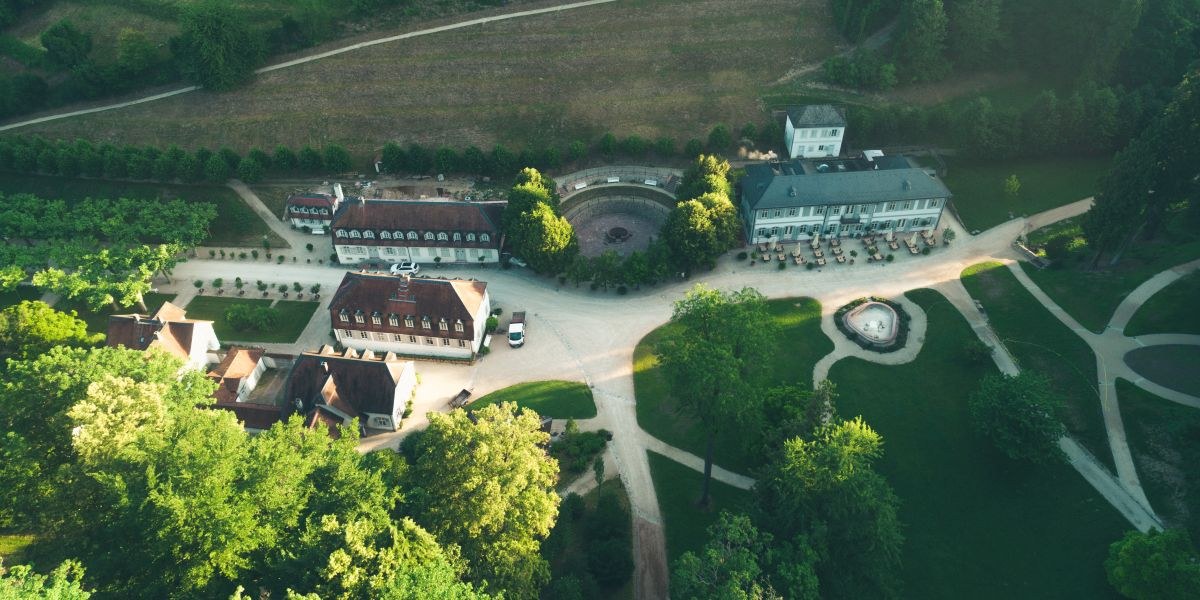From spring to princely park - Fürstenlager State Park, Bensheim-Auerbach (Part 1)
"Once upon a time there was a spa..." So might a fairy tale about the Fürstenlager State Park begin, and anyone who wanders through it today really does feel as though they’ve been transported to a fairytale scene. The beginnings of the park’s creation, however, were not very fairytale-like. They consisted of red, greasy minerals in the Roßbach area that Georg Nikolaus Gerst, an Auerbach barber and mayor, investigated in 1739. He discovered three springs, which he had secured with a few boards. Centuries passed before this modest starting point became a landscaped garden, during the course of which Auerbach developed into a well-frequented bathing resort.
This progress was not without obstacles - the spring silted up and had to be dug out again, and the Seven Years' War caused an interruption in between - but in 1766, the fountain was redesigned and a year later, a distinguished visitor came. In 1767, Landgrave Ludwig VIII deigned to bring himself to Auerbach for a cure, consumed a substantial quantity of healing water, ordered the expansion of the spa and thus made the place a prominent summer resort. The first permanent building was constructed east of the fountain, a pavilion in which the Landgrave could reside, as was befitting of his status. A successful decade later, when the Hereditary Prince Ludwig stayed among the spa guests in 1783, the reputation of the miracle waters had already been cemented, and Auerbach had long since established itself as a health resort.
Even if the healing power of the water is today considered to be rather minimal, at the time, the hereditary prince developed a fervent passion for the spring of health. Since he regularly spent his summers here, he bought adjoining plots of land from Auerbach farmers for an expansive garden in the latest European garden style - a landscape garden. Hereditary Prince Ludwig had summerhouses and memorial stones arranged around the grounds, all connected by a network of avenues. There was also something else special in his plans: following the English model of the ornamental farm, agriculture and animal husbandry were merged harmoniously with the leisure facilities. Later, the quaint little village was also built. Unlike in other complexes, it wasn’t just an accessory for shepherd games and aristocratic escapism: lords and ladies actually lived there, surrounded by working agriculture and a growing park - down-to-earth rural escapism par excellence, which visitors can still actively recreate today.
Next article in the series:From spring to royal park - Fürstenlager State Park, Bensheim-Auerbach (Part 2)
Gallery
Published on 17.09.2017
Share on Twitter?
By clicking on this link you leave the Kultur in Hessen website and will be redirected to the website of Twitter. Please note that personal data will be transmitted in the process.
Further information can be found in our privacy policy.
Share on Facebook?
By clicking on this link you leave the Kultur in Hessen website and will be redirected to the website of Facebook. Please note that personal data will be transmitted in the process.
Further information can be found in our privacy policy.













